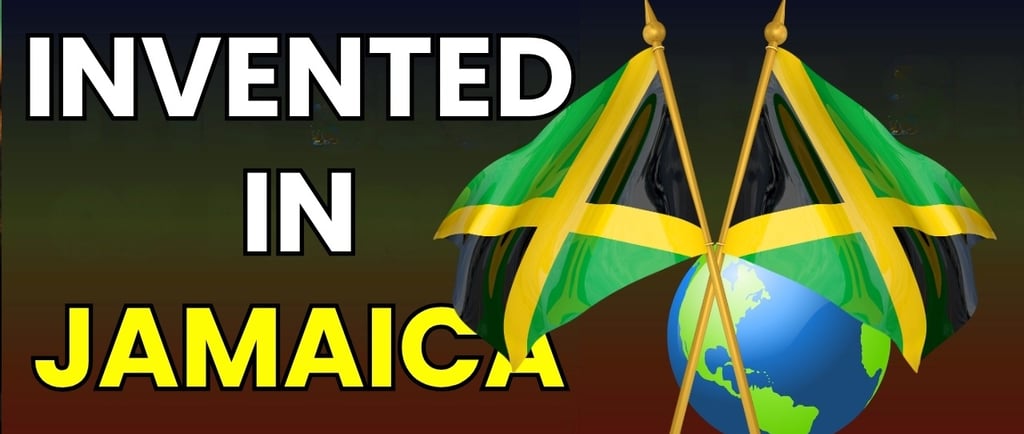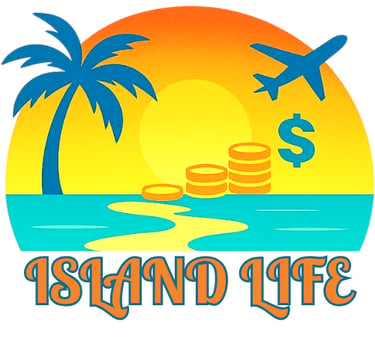7 Inventions You Won't Believe Are From Jamaica | Jamaican Inventions
Discover 7 inventions you won’t believe are from Jamaica! From everyday essentials to groundbreaking innovations, Jamaica has contributed far more to the world than most people realize. Learn about Jamaican inventions, inventors, culture, history, food, money, and surprising facts about Jamaica that shaped modern life. If you love exploring Jamaican innovation, heritage, and world impact, this video will open your eyes to the hidden genius of the island beyond reggae and Bob Marley. Perfect for anyone interested in facts about Jamaica and its global influence!
Ménesa
11/15/20255 min read


The idea of a vacation where you leave your wallet behind—where food, drinks, and fun are all included in one price—feels like a modern travel standard. And while the concept had early roots in Europe with Club Med, it was Jamaican entrepreneurs who took the idea and perfected it into the luxurious, world-conquering model we know today.
Seven inventions you won't believe are from Jamaica.
When you think of Jamaica, what comes to mind? Probably stunning beaches, ice-cold Red Stripe, and the legendary music of Bob Marley. You’re picturing a paradise of sun, sand, and reggae. An island that’s perfected the art of the vacation.
And you're not wrong… but that's only a tiny piece of a much bigger, more surprising story.
Get ready to see Jamaica in a whole new light. Here are seven inventions you won't believe are from Jamaica.
Number seven: The art of asymmetrical warfare.
Kicking off our list is an invention born not in a lab but in the dense, unforgiving mountains of 18th-century Jamaica. Long before “asymmetrical warfare” became a textbook military term, it was mastered by the Jamaican Maroons.
The Maroons were communities of formerly enslaved Africans who escaped brutal coastal plantations and carved out lives of freedom in the island's rugged interior. Facing the technologically superior and far larger British colonial army, they didn’t stand a chance in a conventional fight. So they rewrote the rules.
Led by brilliant strategists like the legendary Queen Nanny, the Maroons turned the island’s geography into their greatest weapon. They used their intimate knowledge of the mountains to conduct devastating ambushes, raids, and hit-and-run attacks. They blended into the jungle using camouflage, striking and disappearing like ghosts.
They dictated every conflict, trading space for time and turning the British army’s numbers into a weakness. For decades, the Maroons fought the most powerful empire in the world to a standstill—eventually forcing the crown to sign treaties granting them autonomy.
Their tactics became a model for resistance worldwide, proving that a small, determined force could defy a global superpower.
Number six: The railway system.
When you think of the great railway booms of the 19th century, you probably picture industrial Europe or the expansion across North America. A small Caribbean island almost certainly doesn’t come to mind—but it should.
Jamaica was one of the very first countries in the Western Hemisphere to establish a railroad system, preceded only by the US and Cuba. The first tracks were laid in 1845, connecting Kingston to Angels Station—just 20 years after the world’s first major railway began in the UK.
Proposed by brothers William and David Smith, the railway solved a massive transportation problem. Before the train, moving goods and people across Jamaica’s mountainous terrain was extremely difficult.
The railway changed everything.
The initial line transported sugar and agricultural goods from the interior to the ports, boosting the economy. Over time, the network expanded to support banana and bauxite industries.
Though public passenger service ended in the 1990s, Jamaica’s railway remains a testament to the island’s early industrial innovation.
Number five: The inspiration for chocolate milk.
Here’s a fact that might change how you see your favourite childhood drink: the modern story of chocolate milk starts in Jamaica.
In the late 1680s, Irish botanist Sir Hans Sloane visited Jamaica. Locals served him a traditional cocoa drink made with water and shaved cocoa. He found it bitter and unpleasant—but instead of rejecting it, he experimented.
He mixed cocoa with milk and sugar, creating a sweeter, smoother drink suited to European tastes. When Sloane returned to England, he brought the recipe with him. For years it was sold as medicine and later helped inspire the Cadbury brothers.
So while chocolate and milk existed before, it was Sloane’s Jamaican encounter—and his decision to commercialise the recipe—that sparked its global popularity.
Number four: The luxury all-inclusive resort.
The idea of a vacation where everything is included might feel modern, but Jamaica elevated it to perfection.
In 1978, Abe Issa—known as the father of Jamaican tourism—relaunched Tower Isle as Couples Ocho Rios, the first all-inclusive, couples-only resort in the region. His concept: a carefree romantic paradise where guests never needed to reach for their wallets.
It was a runaway success.
Then in 1981, Jamaican entrepreneur Gordon “Butch” Stewart opened the first Sandals resort in Montego Bay. Stewart took Issa’s idea and supercharged it—adding gourmet dining, premium drinks, water sports, and even scuba diving to the package.
This Jamaican model of bundling luxury and value became the global standard for tourism.
Number three: Sound system culture and the birth of the DJ.
Any time you see a DJ commanding a crowd, you’re watching the legacy of an art form born in Kingston in the 1950s. This is the Jamaican sound system—the true origin of modern DJ culture.
Massive mobile speaker setups were rolled into the streets for neighbourhood parties. These weren’t just speakers—they were feats of engineering strong enough to shake the ground.
The selector curated the music, but the real breakthrough came from the DJ (what we now call the MC). Inspired by American radio hosts, pioneers like Count Machuki and U-Roy started “toasting”—rhythmic talking and chanting over instrumental breaks.
This turned the DJ into the star of the show.
Jamaican immigrants later brought this culture to New York. DJ Kool Herc applied these techniques to funk and soul breaks in the Bronx—laying the foundation for hip-hop.
Number two: Dub and the invention of the remix.
If sound systems were the stage, dub music was the laboratory of innovation.
Born in Jamaican studios in the late 1960s and early ’70s, dub was the world’s first true remix. Producers like Osborne “King Tubby” Ruddock and Lee “Scratch” Perry reimagined songs by stripping them down to drums and bass, then adding heavy reverb, delay, and echo.
They transformed finished songs into atmospheric new creations. This experimental style became the blueprint for modern electronic music—from hip-hop to pop to EDM.
Number one: The genetic head start for speed.
Jamaica’s dominance in sprinting isn’t a coincidence.
Scientists have studied a gene called ACTN3—nicknamed the sprint gene—which produces a protein crucial for fast-twitch muscle fibres. People of West African descent, including many Jamaicans, more frequently carry the active version of this gene.
This doesn’t guarantee speed, but it does offer a biological advantage. Combined with intense training and a national culture that celebrates track and field, this creates the perfect environment for world-class sprinters.
From military strategy and music to food and tourism, Jamaica’s influence reaches far beyond what most people realise. This small island has been a powerhouse of innovation, proving that world-changing ideas can come from anywhere.
So, which of these Jamaican inventions surprised you the most? Was it the military genius of the Maroons or the surprising origins of chocolate milk? Drop a comment below and let us know.
If you enjoyed seeing this different side of Jamaica, consider grabbing the FREE ebook and checklist below to learn more about your history and heritage.
Thanks for reading.



